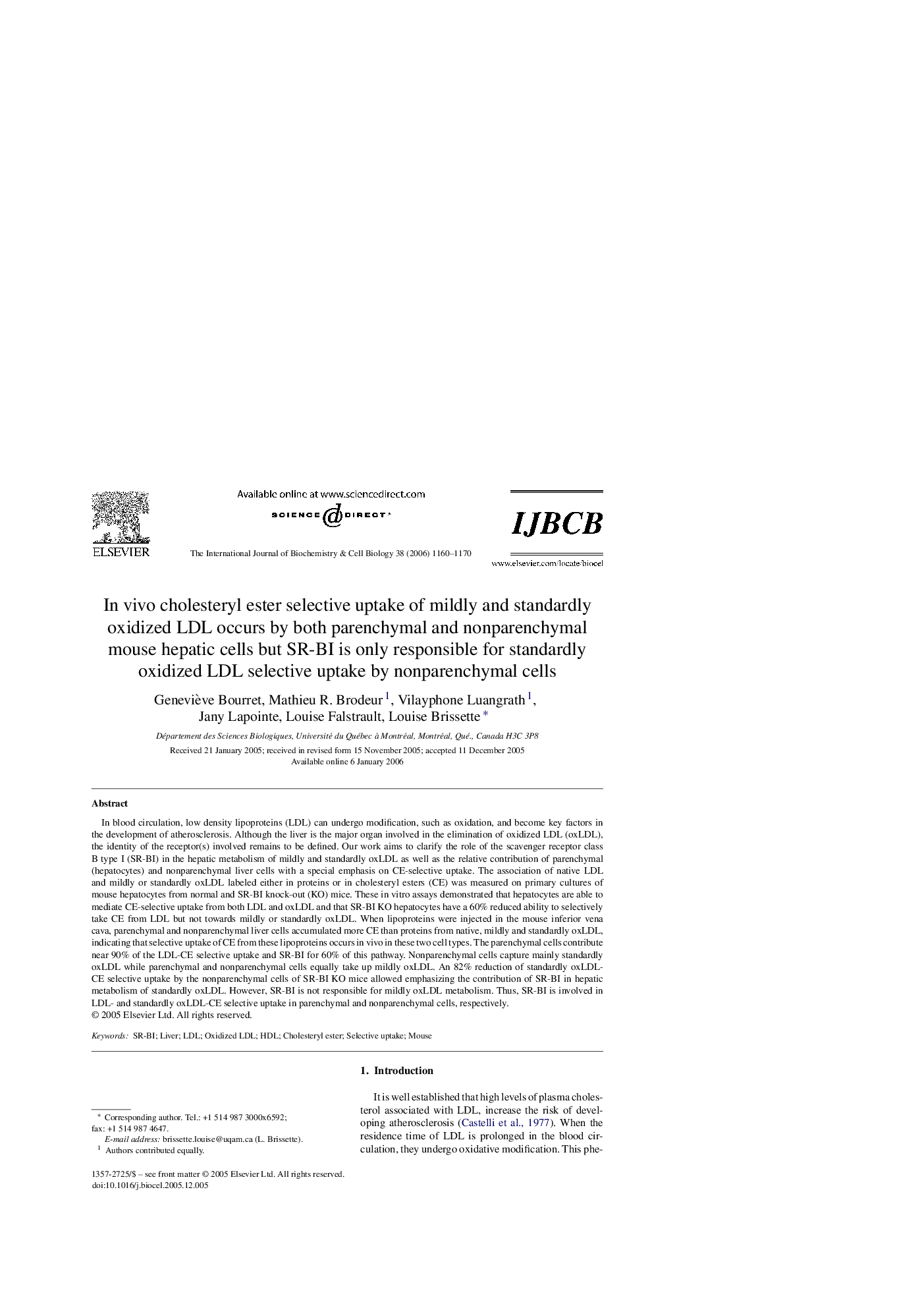| Article ID | Journal | Published Year | Pages | File Type |
|---|---|---|---|---|
| 1984516 | The International Journal of Biochemistry & Cell Biology | 2006 | 11 Pages |
In blood circulation, low density lipoproteins (LDL) can undergo modification, such as oxidation, and become key factors in the development of atherosclerosis. Although the liver is the major organ involved in the elimination of oxidized LDL (oxLDL), the identity of the receptor(s) involved remains to be defined. Our work aims to clarify the role of the scavenger receptor class B type I (SR-BI) in the hepatic metabolism of mildly and standardly oxLDL as well as the relative contribution of parenchymal (hepatocytes) and nonparenchymal liver cells with a special emphasis on CE-selective uptake. The association of native LDL and mildly or standardly oxLDL labeled either in proteins or in cholesteryl esters (CE) was measured on primary cultures of mouse hepatocytes from normal and SR-BI knock-out (KO) mice. These in vitro assays demonstrated that hepatocytes are able to mediate CE-selective uptake from both LDL and oxLDL and that SR-BI KO hepatocytes have a 60% reduced ability to selectively take CE from LDL but not towards mildly or standardly oxLDL. When lipoproteins were injected in the mouse inferior vena cava, parenchymal and nonparenchymal liver cells accumulated more CE than proteins from native, mildly and standardly oxLDL, indicating that selective uptake of CE from these lipoproteins occurs in vivo in these two cell types. The parenchymal cells contribute near 90% of the LDL-CE selective uptake and SR-BI for 60% of this pathway. Nonparenchymal cells capture mainly standardly oxLDL while parenchymal and nonparenchymal cells equally take up mildly oxLDL. An 82% reduction of standardly oxLDL-CE selective uptake by the nonparenchymal cells of SR-BI KO mice allowed emphasizing the contribution of SR-BI in hepatic metabolism of standardly oxLDL. However, SR-BI is not responsible for mildly oxLDL metabolism. Thus, SR-BI is involved in LDL- and standardly oxLDL-CE selective uptake in parenchymal and nonparenchymal cells, respectively.
